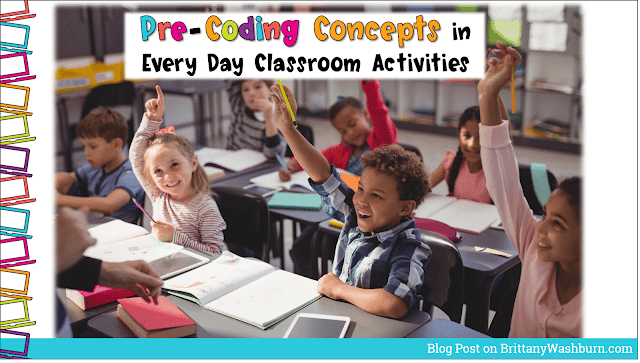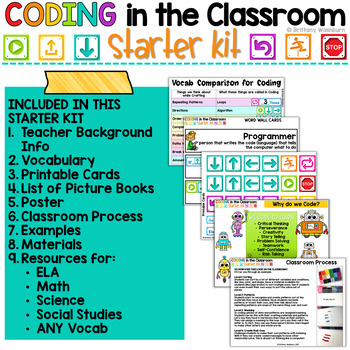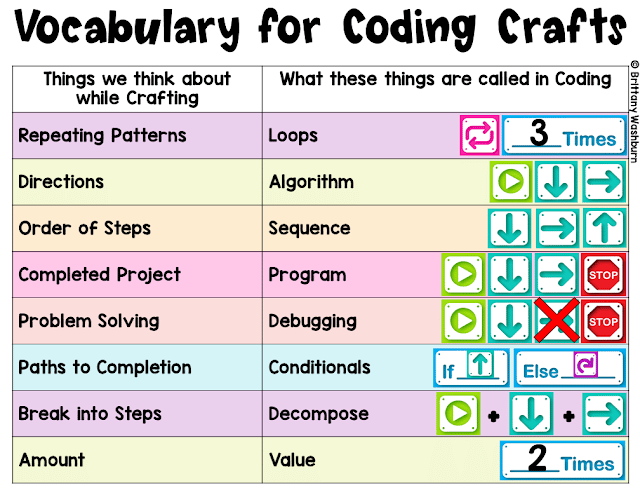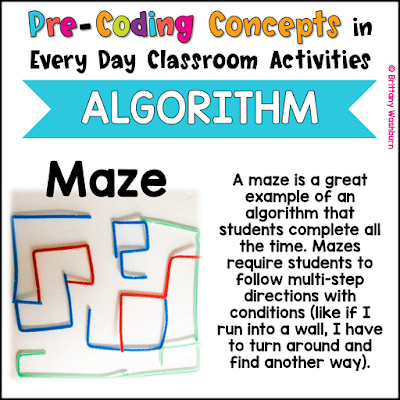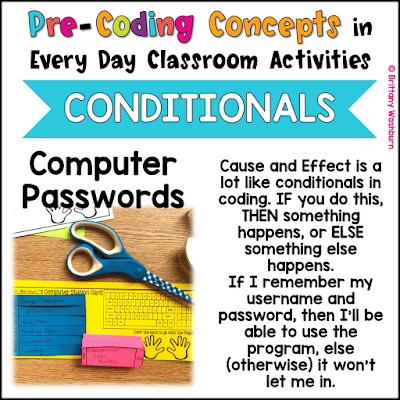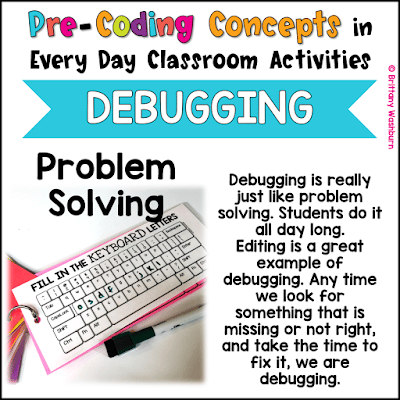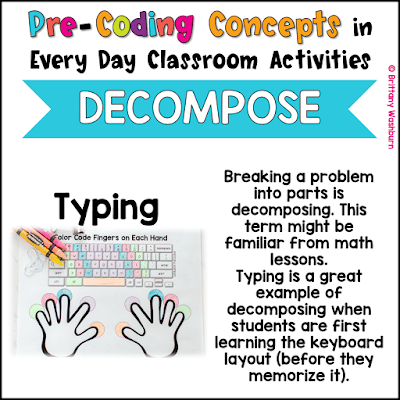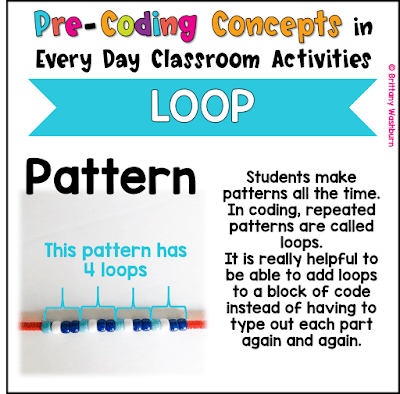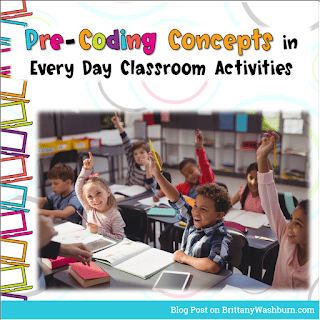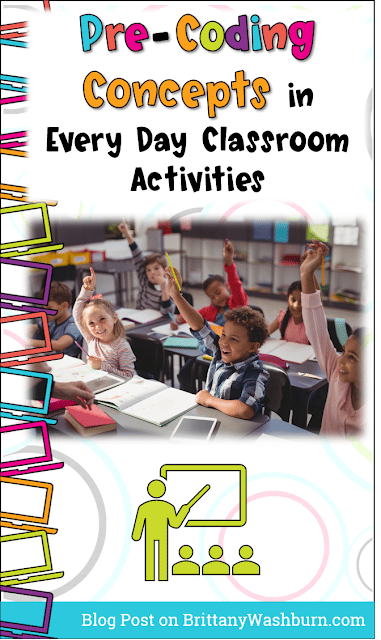Without even knowing it, we are teaching coding concepts in the classroom every day. You know that saying “All I really need to know I learned in Kindergarten”? Well, it definitely applies here.
I’m writing this blog post to encourage teachers to do something that might seem scary or too hard – teach coding.
Most people who haven’t done it before think that it requires some special program or software to get started. I’m here to tell you it can be done without using computers. In fact, I guarantee you’re teaching coding concepts already!
Grab this FREE Coding in the Classroom Starter Kit and then follow along below.
The Vocabulary of Pre-Coding Concepts
This is where the only change comes in. When you’re doing a craft or other creative project in the classroom, you use common vocabulary like patterns, directions, steps, amounts, problem solving, etc. These are all pre-coding concepts! I challenge you to try to use the vocabulary on the right side of this chart as you teach your next creative project.
Here are some every day examples of these Coding terms:
A maze is a great example of an algorithm
that students complete all the time. Mazes require students to follow
multi-step directions with conditions (like if I run into a wall, I have to
turn around and find another way).
Cause and Effect is a lot like
conditionals in coding. IF you do this, THEN something happens, or ELSE
something else happens.
If I remember my username and password, then I’ll be able to use the program, else (otherwise) it won’t let me in.
Debugging is really just like problem
solving. Students do it all day long.
Editing is a great example of debugging.
Any time we look for something that is missing or not right, and take the time
to fix it, we are debugging.
Breaking a problem into parts is decomposing. This term might be familiar from math lessons.
Typing is a great example of decomposing
when students are
first learning the keyboard layout (before they memorize it).
Students make patterns all the time. In
coding, repeated patterns are called loops.
It is really helpful to be able
to add loops to a block of code instead of having to type out each part again
and again.
Every time students put things in a
specific order, they are sequencing. You are probably familiar with this term
from ELA, and it also applies to coding.
A programmer has to think through a sequence of events to make sure the outcome is correct.
Am I starting to convince you yet?
Books you can use in the Classroom that teach Coding Concepts
The following books are great for demonstrating behaviors that are beneficial for STEM and Coding in the classroom. They have themes like not giving up, troubleshooting, and problem solving, which are critical to open ended activities like coding. Many of the stories also teach actual coding skills like conditionals, sequencing, and following an algorithm (but remember they are using the crafting vocab not the coding vocab so be sure to point out the differences to students).
I also have created a set of eBooks on Coding concepts:
These books are all about Problem Solving
So How does this look in the classroom?
I’ll run you through an example.
Level 1: Sorting
Students can sort by a lot of different variables and conditions, like size, color, and shape. Have a material available for students (like Lego bricks) to sort multiple ways. See if students can even invent their own ways to sort the same set of pieces.
Level 2: Patterns
Students start to recognize and create patterns out of the materials they have available. Have students recreate patterns or invent their own, and then talk about how repeating patterns are loops of the same thing over and over.
Level 3: Meaning
In coding, pieces of data and patterns are assigned meaning. Students can do this with their crafting materials and patterns. Let’s say they have 4 red blocks then 1 blue as their pattern. They can assign a meaning to this loop. Let’s say they call it the letter A. In fact, they can use these same 5 blocks rearranged to make other letters and whole words.
Level 4: Create their Own
Challenge students to make their own patterns with meaning. With it they can create coded messages to have other classmates solve. This is all part of thinking like a computer!
Materials to keep in the classroom for Coding activities
- Pattern blocks
- Painter’s tape
- Clay
- Pom poms
- Cotton balls
- Graph paper
- Rulers
- Stamps
- Straws
- Magna-Tiles
- LEGOs
- Foam blocks
- Wood blocks
Examples of Coding Crafts to have Students Complete
- Marble Run
- Rebus Story
- Maps and Roads
- 3D Structures
- Puzzles
- Block building with narratives
- Synchronized dramatic play
- Pegboard or other grid patterns
I hope this gives you lots of ideas and the confidence to call what you’re already doing CODING in the classroom!

